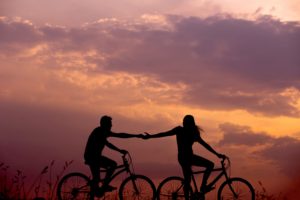A securities-backed line of credit is like a home equity line of credit in many ways, though with this type of loan, the collateral is your investment account, not a home. A securities-backed line of credit (SBLOC) allows investors to get cash by borrowing against their investable assets versus liquidating their portfolio. Although it may not be a good long-term strategy for most investors, it can be a compelling short-term solution while awaiting liquidity from selling your current house.
Should you use a securities-backed line of credit to buy a home?
In the right situation, a line of credit on your investment assets to buy a home is a great strategy. The primary benefits are tax savings and ability to stay invested. As with any financial decision, there are risks. Borrowing against your portfolio involves risk. Here are some of the pros and cons of getting a line of credit on your investment portfolio to buy a home.
How it works
While programs vary and not all borrowers qualify, the process to get a securities-backed line of credit is straightforward with most lenders. In fact, getting approved for an asset-backed line of credit is often much quicker and easier than a traditional mortgage.
When you have liquidity to repay the loan, perhaps from the sale of a business or your current home, you can simply pay off and close the line of credit. Payments in excess of the required interest payment will reduce the outstanding balance and subsequent interest payments. This can be more advantageous than a regular mortgage, as putting a lump sum towards principal won’t automatically lower your payment.
There are usually standard minimum/maximum credit lines. Borrowers need to speak with the lender to find out how much liquidity they can access, but it could be a significant portion of the account value. However, similar to qualifications on a regular mortgage, what you can borrow might not align with what you can afford.
Depending on the lender, retirement accounts may not be eligible for this type of loan. Allowable securities can be a range of stocks, mutual funds, and ETFs.
Pros and cons of using a portfolio-based line of credit to buy a house
Ultimately, you’ll want to speak with your financial and tax advisor before considering borrowing against your investment accounts. Any type of loan won’t make sense if it isn’t aligned with the rest of your financial situation and means.
Here are some of the primary pros and cons of funding a home purchase with an SBLOC:
- Tax savings. Perhaps the biggest benefit of using a portfolio-based loan to buy a home are the tax savings compared to liquidating your brokerage account and incurring capital gains tax. The interest you pay on the loan may also be tax-deductible, subject to regular limits.
- Staying invested. Taking a line of credit on your investment accounts means you can stay invested for the long term. It also helps avoid a situation where you could be forced to sell out of the market at once.
- Risks. Borrowing against your portfolio carries unique risks. The lender may be able to demand payment at any time depending on the value of your collateral account and other factors. If you own highly volatile assets, it will increase your risk and impact eligibility. Discuss the terms and risks with your advisor and the lender. You may need lender approval to take any new money from your account, which can cause delays when you need funds.
- Interest rates and fees. Interest rates on securities-backed lines of credit are variable, as a spread from the Secured Overnight Financing Rate (SOFR) rate. Interest-only payments will also give borrowers more flexibility while they wait for liquidity to retire the line of credit. Note that portfolio-backed loans often have higher interest rates than a mortgage. But unlike a mortgage with closing costs, this type of credit line may have no application or servicing fees whatsoever.
- Flexibility financing. It’s great to have options! A SBLOC can offer investors the flexibility to repay the loan on their timeline, get a regular mortgage down the road when rates fall, or create bridge financing before an upcoming liquidity event.
Other options
An asset-based line of credit isn’t the only way to finance a major purchase. And sometimes, there are better solutions. When mortgage rates are low, it can be advantageous to get a regular mortgage versus paying cash. Homebuyers can also consider home equity lines of credit (HELOC) or a cash-out refinance for funding.
Article written by Darrow Wealth Management President Kristin McKenna, CFP® and originally appeared on Forbes.
Last reviewed March 2024










